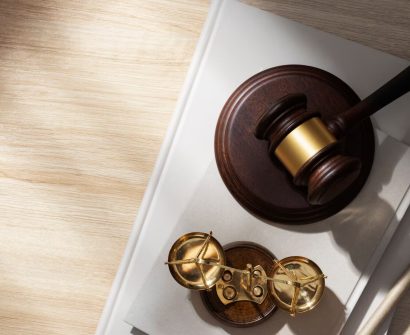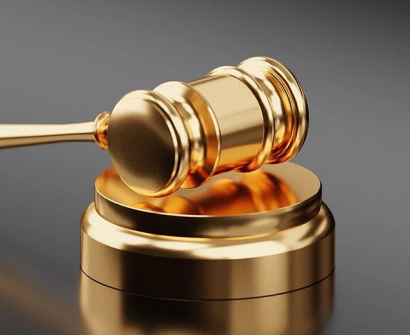
The Latin expression Res Sub Judice, which means “a matter under judgment,” is extremely significant in the field of law. It relates to a legal principle that prohibits multiple courts from deciding the same case simultaneously in order to avoid conflicting rulings and judicial disorder. This approach preserves the finality of decisions and the judicial economy whilst at the same time ensuring the integrity of proceedings in court.
But in order to achieve a balance between the rights of litigants and the principles of justice, the implementation of this idea necessitates judicial restraint as well as thoughtful consideration.
The doctrine of Res Sub Judice
- Res stands for all rights that are the subject matter of a specific case. Sub-judice, translated from Latin, means “under a judge,” or alternatively, “under consideration.” Res sub judice is also known to be a stay of suit or Stay of Proceedings. As per the res sub judice meaning, it refers to a case that is pending or on trial before a judge or court. Res-judicata prohibits a lawsuit that is already underway in a court of competent jurisdiction from being tried there.
- The competent court has the authority to delay another court’s proceedings when the same parties file two or three suits related to the same issue. The principal goal is to forbid concurrent jurisdiction courts from concurrently hearing two cases parallel.
Res Sub Judice: It’s Objective
- The objective of CPC Section 10 is to prohibit courts having concurrent jurisdiction from concurrently hearing and ruling on two parallel lawsuits pertaining to the same cause of action, same subject matter, and same relief.
- It also seeks to prevent pointless lawsuits, sparing the courts from wasting the State’s and the litigant’s time and financial resources.
The doctrine of Res Sub Judice: Test for Applicability
- Whether the outcome of one litigation would be regarded as a decided case (res judicata) in a subsequent lawsuit determines whether Section 10 applies.
- The later litigation needs to be put on hold if this is the case. Additionally bolstering this idea is the S.P.A. Annamalay Chetty v B.A. Thornbill case.
Res Sub Judice CPC: Effect of Contravention
- In execution proceedings, a decree issued in violation of Section 10 of the CPC is not void and cannot be ignored.
- A party may choose to waive the clear and basic procedural rules outlined in this section.
- The court’s ability to consider the case’s merits is unaffected in any way by the mere filing of an application under Section 10.
Difference Between Res Sub Judice and Res Judicata
The difference between res subjudice and res judicata is as follows:
| RES SUBJUDICE | RES JUDICATA |
| It’s an issue that is now being discussed. | The issue has been resolved and is considered final. |
| In essence, it avoids repetitive procedures and saves time. | In essence, it closes the case and prevents further litigation. |
| It is applied while a legal proceeding is ongoing. | It is applied after a case’s conclusive ruling. |
| It is dependent on the outcome of two civil cases involving the same parties. | It is subject to the resolution of one prior case as well as one more. |
| When a previous case is still ongoing before a judge, it is used. | When the subject of a subsequent litigation is closely linked, it is employed. |
| It is used when a case with a similar title is filed in the future. | It is used when the parties in a subsequent lawsuit are the same or comparable. |
| Section 10 is applicable in the event that a subsequent application is made to the Tahsildar. | It is a legal action filed in a court of law. |
| It is dependent upon the day the case is filed and the plaint is submitted. | It is dependent on the court having considered and decided the case in a previous lawsuit. |
The Doctrine of Res Sub Judice is an important international legal doctrine that greatly enhances the efficiency of legal systems. It reduces the workload for courts and ensures that a single case is heard by a single court, avoiding inconsistent decisions. However, as explained in earlier parts, compliance with certain requirements is necessary for the doctrine to be relevant.
Notwithstanding the doctrine’s many benefits, there is a demand to expand its application in order to stop courts from abusing their unbridled authority under Section 151 of the Code of Civil Procedure. Although the theory has shown to be invaluable in expediting court procedures and reducing needless expenses and delays resulting from concurrent litigations, further development of the concept is necessary to improve India’s current legal system.
The doctrine of Res Sub Judice FAQs
1. What are the conditions for res sub judice?
Section 10 of the CPC embodies the idea of Res Sub-Judice. A court with the necessary authority must rule in the previously filed lawsuit. It is necessary to present two suits: the later suit and the former or previously instituted action.
2. What are the consequences of Sub judice?
A person should only be imprisoned for a maximum of two years for subjudice contempt.
3. Under what circumstances the suit cab stayed?
The same parties must file the lawsuit under the same title and issue. The case must be pending in any Indian court where it was initially filed. The lawsuit cannot be dismissed by the court; it may only be postponed. When a lawsuit is stayed under section 10, an application cannot be submitted; only a revision petition may be filed.
4. What is the exception of res sub judice?
There are well-established exceptions to the doctrine of Res Subjudice, such as interlocutory or interim orders. Certain orders are issued without a trial; therefore, this Doctrine cannot be used to stay such orders.
5. In which case the rule of sub judice is not applicable?
This clause cannot be applied by the court in situations where the points at issue are unique and diverse, or even in situations where some issues are similar and others are not. Additionally, this clause does not apply to lawsuits where the parties are the same but the concerns are not.
6. What is the abandonment of a suit?
A legal proceeding in which parties withdraw or secede from a previously held position is referred to as an abandonment of suit or withdrawal of litigation.
7. What is the doctrine of the res sub judice section in CPC?
The public objective of the res sub judice concept is to prevent two contradictory rulings about the same relief from being rendered by the same court and to limit a plaintiff to a single lawsuit.
8. What does subject to sub judice mean?
Anything that is under trial in a court of law is said to be sub judice. This implies that it is forbidden for anyone to debate it in the media in Britain.
9. Can a suit be filed without notice?
When immediate relief is required, it is customary to bring a lawsuit under Section 80 without providing notice, get temporary relief, serve a notice, and then withdraw the notice.
10. What is the rule of sub judice?
In its broadest sense, the sub judice rule forbids the dissemination or publication of any material that might be used to harm an ongoing legal proceeding, such as specifics of the evidence, witnesses, or arguments that are being made.
11. What is the difference between res subjudice and lis pendens?
Res subjudice prevents several lawsuits with the same parties, subject matter, and cause of action from pending concurrently in several competent courts, and Lis pendens prevents the sale of real estate while the litigation is pending trial.
12. Which coaching is best for the judiciary?
Jyoti judiciary Coaching offers the best judiciary coaching in Jaipur.
With the goal of giving students the best coaching available for law entrance exams including the CLAT, AILET, and various other state judiciary exams, Jyoti Judiciary Coaching, India’s Finest educational Platform, was established. Come enroll now with Jyoti Judiciary!
For any latest news, legal topics, judiciary exams notifications, patterns, etc watch Jyoti Judiciary’s YouTube channel for legal videos for any updates at https://youtube.com/@jyotijudiciarycoaching4852?si=2cwubh9d2A9urwJf









